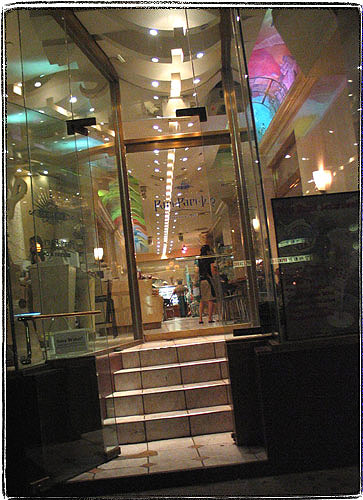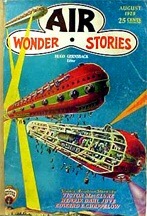Here I sit, in my favorite seat on the Q train facing the window, writing this post on my Blackberry TM.
Remember, I promised to write a long and involved post about pen computing, mind mapping, memex and electronic books? Well, I don’t think I can cram all of my thoughts on the subject into a well organized linear article. Instead, I think I’ll write a series of hyperlinked rants. I think that will be even more appropriate. So here goes.
Joel Spolsky likes to refer to “future so bright, you’ll need sunglasses”. Most of the people I know, are wearing Mylar goggles. But that future is not bright enough right now, so it only seems like eternal night with a few sparks here and there. That future is electronic books and pen computing.
So, I sit on this train with a copy of the New York Times. And I’ve just read an article about a woman with a Masters degree from Columbia who sells her short stories for two bucks a piece from a cardboard box in a subway station. There is so much wrongness here. And a parallel : me, struggling with turning pages of a gigantic broadsheet that is the NYT, in a cramped subway seat, my hand filthy with newsprint by the time I found something interesting among the piles of information that the editors and advertisers thought I should read; and her, crouched on the cold cement floor, with a pathetic cardboard box, selling her information that way because nobody wants to publish it.
This is wrong, wrong, wrong, wrong, WRONG!
The first thing that is wrong is that the NYT is published in broadsheet (as opposed to tabloid) format. Which means that to read it you need to use some weird folding techniques.to read them on a train. This is something that I might enjoy, but I am absolutely not typical. I enjoy practical applications of the science of topology. I can tie many nautical and surgical knots, and I fold and stack my t-shirts in a way so that the design of the shirt always shows up on the same edge. And I learned how to fold broadsheets from my High School Economics teacher. And even I am annoyed.
So dead tree newspapers are not ergonomic. But that’s not all. I can’t get only the information that I want to purchase. If I were rich, I could employ the services of newspaper clipping service. I would gladly pay to read ‘s articles if they were clipped from Ediot Achronot and translated into English somehow. Even right now I pay 10 dollars a year to get newspaper and online comics from http://www.mycomicspage.com.
Unfortunately most information providers want to lump together everything that they’ve got and sell it as a whole. Out of a couple of hundreds of cable channels that I pay for, I am interested in maybe 15 – 20 shows that run on a few channels. But to get only those channels would cost me just a few dollars less than the whole deal. And that sucks! I am subsidizing a whole lot of stupid no talent shows at the same time when shows that I crave are being canceled. Firefly, Futurama, The $treet – gone. I’d give up 180 channels just to get those three shows back. And so would many, many people.
Sirius satellite radio has two things that I like immensely – a good jazz channel and their hypnotic callsign. Everything else I don’t care about. But to get that I would also have to pay for every other channel they provide. And I am not gonna.
This is socialism, people. Few talented information creators feed hundreds of no-talent parasites. What is even worse, there is a certain threshold that is equally hard to overcome to both talented and non-talented people. That threshold is the editors. They are a proxy, a layer that is supposed to filter out crap. But the filtered stuff has the same proportion of crap in it (governed by Sturgeon’s law).
For instance, a few years ago I picked up a book called Year’s Best SF. I was reading crappy story after crappy story. But one of the stories, “Guest Law” by John C. Wright, Esq. was definitely not crappy. In fact, it was so good that I tracked down every single piece of Mr. Wright’s prose. In fact, after sending money to some two bit sci-fi rag that published one of the stories, through almost half a year I had to send a few dozen emails to the publisher just to get that one magazine with the story. And it was worth it. To me, but not to Mr. Wright. What is very upsetting, is that instead of paying the author directly, I had to pay the derelict editors and all the other authors I don’t care about.
All of these problems can be solved with technology, and I’ll write about that in the next post.














